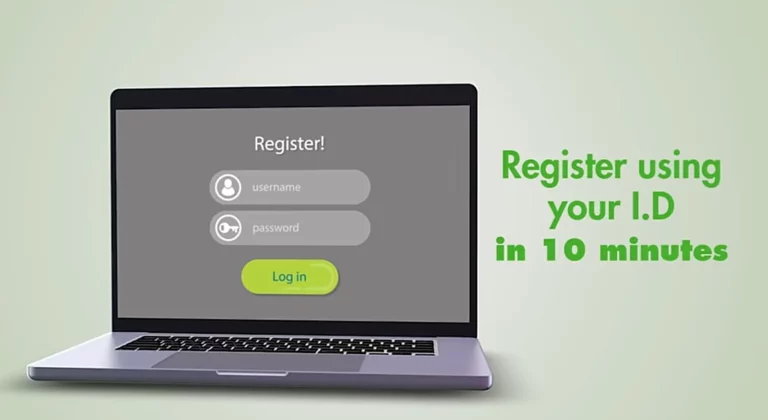Microfinance refers to providing financial services, like loans, savings accounts, and insurance, to low-income individuals and communities. Microfinance institutions aim to support entrepreneurship and small business growth for those who may not have access to traditional banking.
Some key points about microfinance:
- Allows people living in poverty to invest in businesses and development opportunities
- Focuses on providing small loans, savings plans, insurance options
- Helps recipients start small businesses like shops, farms, craft businesses
- Provides options for those often excluded from formal banking systems
- Promotes grassroots economic development and self-sufficiency
Profitable Microfinance Business Ideas
Microfinance opens up doors for new business ideas for low income entrepreneurs. Here are some top business sectors that do well with micro loans and financing:
Here are some profitable microfinance business ideas you can consider. It’s important to understand that even within the microfinance sphere, success greatly depends on careful research into your target market and the existing services in your area:
1. Traditional Microcredit
Providing small, short-term loans to low-income individuals and micro-entrepreneurs who may otherwise lack access to traditional banking services. Focus can be on individuals or groups.
Profitability Considerations: Success and profitability rely on:
- Careful risk assessment and management to keep default rates low
- Interest rates that are competitive but cover operational costs and a reasonable margin
2. Savings Groups
Facilitating the formation of community-based savings and lending groups (similar to ROSCAs – Rotating Savings and Credit Associations). This involves member education, providing secure storage of funds, and potentially connecting groups to larger financial institutions.
Profitability Considerations: Income can be generated through:
- Membership fees
- Commissions from partnering financial institutions where groups deposit funds
3. Microinsurance
Offering affordable insurance products tailored to the needs of low-income populations, covering health, agriculture, livestock, or property.
Profitability Considerations: Success relies on:
- Partnering with reliable insurers
- Understanding the specific risks faced by your target market to design suitable products
- Keeping operational costs low to maintain affordable premiums
4. Financial Education and Training
Providing workshops and personalized guidance on budgeting, debt management, savings, basic business principles, and investment to empower micro-entrepreneurs and individuals.
Profitability Considerations:
- Workshops or courses can have fees
- Can be offered as a value-add for other microfinance products
- Partnerships with institutions (NGOs, government programs) can increase reach and funding opportunities
5. Mobile and Digital Microfinance
Leveraging mobile phone technology and digital platforms to provide microfinance services like loan applications, disbursements, payments, and savings.
Profitability Considerations:
- Reduces operational costs significantly
- Revenue through transaction fees, partnerships with mobile providers
- May require investment in technology and platform development
Creative Microfinance Business Ideas
bsolutely! Here are 5 more creative microfinance business ideas to consider:
- Micro-leasing: Providing leases for essential equipment or assets to small businesses. This could include:
- Agricultural tools and machinery for smallholder farmers
- Sewing machines, ovens, etc., for micro-manufacturers or food-based businesses
- Vehicles or motorcycles for transport-oriented entrepreneurs
- Green Microfinance: Focusing specifically on financing environmentally friendly projects and businesses. This could involve:
- Loans for solar power installations or energy-efficient appliances
- Funding for sustainable agriculture practices or waste management initiatives
- Investment in eco-friendly micro-enterprises
- Micro-franchising: Helping individuals set up small-scale franchises of established brands. This provides:
- Support, training, and access to established business models
- A level of security and potential for growth for the entrepreneur
- Microloans could be part of the franchise package
- Peer-to-Peer (P2P) Microlending: Utilizing online platforms to connect individual lenders with micro-entrepreneurs seeking funding. Advantages include:
- Potentially lower interest rates compared to traditional microfinance
- Greater flexibility and transparency
- Social investment elements can be attractive to lenders
- Micro-factoring: Offering the purchase of invoices at a discount to small businesses that need short-term liquidity. This aids with:
- Immediate cash flow for businesses waiting on customer payments
- Potentially less stringent requirements than traditional loans
Important Factors for Success:
- Thorough Market Research: Understand the particular needs, pain points, and opportunities within your chosen market.
- Strong Partnerships: Build relationships with NGOs, government programs, community leaders, and other financial institutions to enhance outreach, funding acquisition, and risk management.
- Social Mission Driven: A strong social mission alongside a focus on sustainability is vital for long-term microfinance success.
Required Skills and Resources
Certain key skills, resources, and supports can set micro enterprises up for success.
Business Planning and Money Management Skills
Micro entrepreneurs need some business acumen in areas like:
- Business planning – Developing business ideas, financial planning, understanding local markets
- Money management – Handling cash flow, tracking income and expenses, financial recordkeeping
- Sales and marketing – Outreach, advertising, customer service for their audiences
Some microfinance institutions provide coaching and development resources to help recipients plan and manage operations. Understanding numbers, planning, promotion, and operations management allows owners to coordinate all aspects of their small businesses.
Access to Micro Loans and Capital
Access to microloans and financial capital gives entrepreneurs the ability to launch and grow enterprises.
Key microfinance supports include:
- Small business loans, usually under $15,000
- Group lending models with joint liability among entrepreneurs
- Development of savings accounts to build capital over time
- Microinsurance options protecting assets and income streams
- Grace periods for repayment as businesses take time to stabilize
With patient capital and group accountability, micro entrepreneurs can access the financing needed to try business ideas without typical lending barriers.
Local Material Inputs and Infrastructure
The local environment shapes what kinds of micro businesses will thrive. Entrepreneurs should consider what’s available in terms of:
- Raw material inputs at low costs
- Local markets and demand for envisioned products/services
- Existing infrastructure – transportation, roads, utilities, storage
- Options for physical spaces to operate enterprises
Understanding local dynamics prevents unnecessary costs and optimizes opportunities based on the area and target buyers.
Common Challenges
Like any business venture, micro enterprises come with core difficulties to tackle.
Managing Consistent Profits and Expenses
Micro businesses operate on very tight margins. Some core financial challenges include:
- Saving enough working capital month-to-month
- Handling uneven cash flow given sporadic sales
- Covering sudden costs from repairs, transportation, medical needs
- Avoiding predatory lenders with extremely high interest rates
Careful tracking of income and outgoing costs helps micro entrepreneurs budget wisely and pivot when needed to ensure consistent baseline earnings.
Accessing Markets and Customers
Reaching enough local customers is essential for micro business viability. Common issues include:
- Knowing target audience interests, preferences, and buying power
- Establishing customer bases and sales channels from scratch
- Marketing and advertising with extremely limited resources
- Transporting goods to vendors/markets lacking reliable transport options
Leveraging community resources, exploring niche positions in value chains, and slowly building a loyal following through persistence and relationship building helps microenterprises become known over time.
Weathering External Shocks and Setbacks
Unexpected setbacks and downturns can deeply destabilize vulnerable small operations.
Challenges here include:
- Health emergencies losing productive work hours
- Natural disasters damaging equipment, spaces, and inventory
- Crime, corruption, instability disrupting local economies
- Poor harvests or input shortages hitting productivity
Careful contingency planning, group support systems, and patience in awaiting better periods helps owners endure storms. The path is rarely smooth, but perseverance pays off.
Keys for Micro Business Success
Certain principles and practices pave the way for microenterprise prosperity long-term.
Developing Solid Foundational Business Plans
Thorough planning prevents poor performance later on. Micro entrepreneurs should cover bases like:
- Estimating start-up and operational costs accurately
- Projecting returns on investment factually
- Researching likely profits based on local contexts
- Evaluating if the model aligns with owner abilities
- Having contingency plans to pivot if original ideas fall short
Creating realistic schemas based on data analysis sets initiatives up to match expectations and capacity.
Coordinating Ongoing Accounting, Administration
Smooth back-office management maintains stability behind the scenes through:
- Keeping detailed sales logs, income tracking
- Monitoring ongoing and periodic expenses
- Maintaining neatly organized inventory/equipment documentation
- Developing reports and financial oversight processes
- Having transparent communication with microfinance partners
Consistent bookkeeping and coordination gives entrepreneurs better financial control and support access.
Expanding Customer Reach Step-By-Step
Patience pays off when systematically expanding consumer based and sales channels over time by:
- Focusing first on easily accessible markets nearby
- Offering promotions to prompt word-of-mouth and returning buyers
- Reinvesting profits to afford small advertisements and awareness campaigns
- Exploring additional market venues as resources allow
- Staying focused meeting existing demand before scaling further
A gradual build in recognition and customer portfolio leads to natural, sustainable growth.
Tips for Seeking Microfinance Opportunities
Those hoping to secure microfinancing for a small business should:
Define the Business Concept and Feasibility
Clarify key aspects like:
- Type of business based on interests and local viability
- Required startup and operational costs
- Projected sales and net profits years 1-3
- Realistic timeline assessing all set-up needs
- Owner contributions via savings or selling assets
- How microfinancing fills remaining capital gaps
This allows applicants to logically demonstrate planning and potential.
Research Local Microfinance Institutions
- Explore options like non-profit organizations, community development groups, government agencies providing micro business loans or group models
- Ask peers for referrals and feedback regarding reputable programs
- Verify institutions offer clear repayment terms and schedules
- Look for providers with business development counsel and training
Vetting micro lenders thoroughly flags any red flags early.
Prepare Application Materials
Typical documentation needs includes:
- Business plans and financial projections
- Collateral commitments applicants can make
- Registration certificates and identity verification
- Evidence of contributions or self-funding capacity
- Personal cash flow statements and budget outlines
- Micro loan purpose justification and amount requests
Complete, accurate applications signal readiness and responsibility expected for making repayments on time.
Being ready for thorough reviews ensures higher odds for securing financing at reasonable rates.
Key Takeaways
Microenterprises present unique opportunities to generate income with limited start-up capital for those excluded from mainstream banking. Success rests on:
- Meticulous planning and projections – Set realistic foundations geared to local contexts
- Ongoing coordination and control – Carefully track finances and operations
- Patience expanding reach – Prioritize steady base building before scaling
- Aligning with microfinancing partners – Ensure repayment capacity with mentor supports
With concerted efforts, micro businesses can positively impact families and communities.




